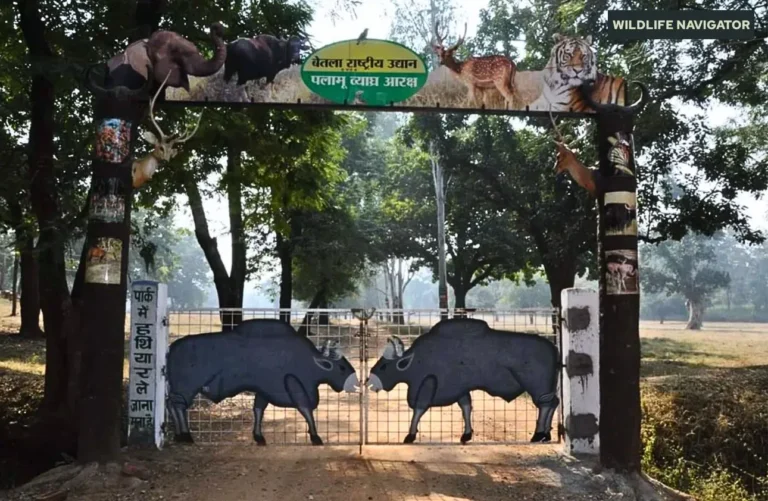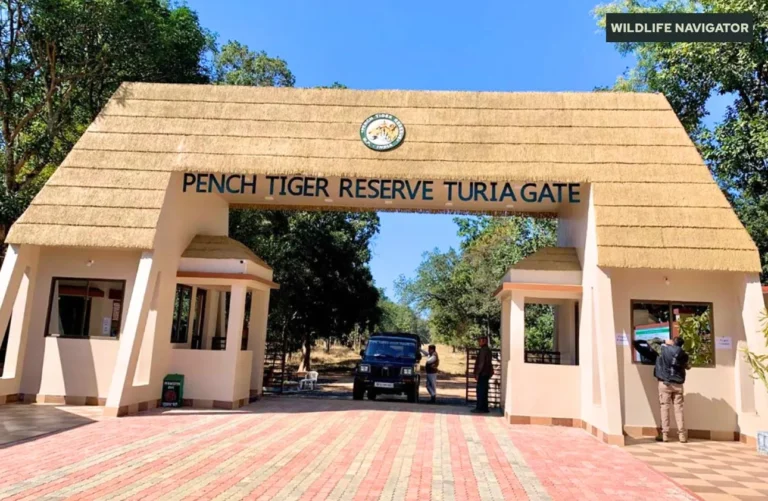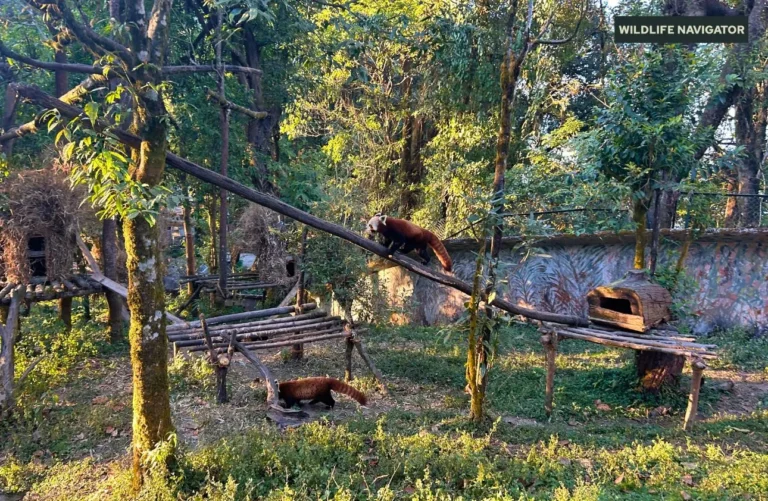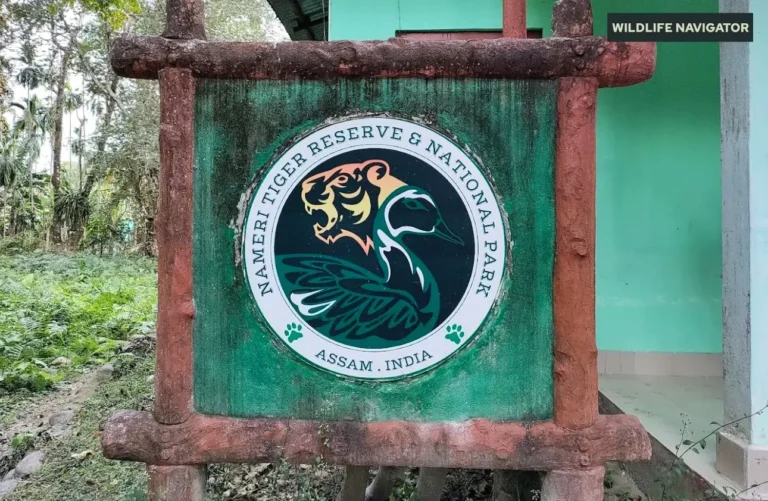Nagarhole National Park & Tiger Reserve: Complete Guide

Nagarhole National Park, also known as Rajiv Gandhi National Park, is one of India’s most renowned wildlife destinations. Nestled in the lush forests of Kodagu and Mysuru districts of Karnataka, the park forms an integral part of the Nilgiri Biosphere Reserve, a UNESCO World Heritage Site. Together with Bandipur, Mudumalai, and Wayanad wildlife sanctuaries, it creates a vast landscape that supports some of the richest biodiversity in southern India.
The name Nagarhole is derived from two Kannada words – Naga (snake) and Hole (river or stream) – referring to the meandering streams that snake through the dense forests. Covering an area of over 640 square kilometers, the park is a mosaic of rivers, valleys, hills, and thick forests, making it a paradise for nature lovers and wildlife photographers.
What makes Nagarhole particularly famous is its status as both a national park and a tiger reserve under India’s prestigious Project Tiger initiative. It is home to a healthy population of Bengal Tigers, along with a wide range of charismatic wildlife, including Asiatic Elephants, Leopards, Gaurs, Wild Dogs (Dholes), and Sloth Bears.
Beyond its thriving wildlife, Nagarhole is also celebrated for its spectacular landscapes, bird diversity, and unique safari experiences—especially the famous Kabini Boat Safari, where visitors can witness elephants and tigers by the riverside. For travellers seeking a blend of adventure, conservation, and culture, Nagarhole National Park is an unmissable destination in South India.
1. Nagarhole Tiger Reserve
Nagarhole National Park was officially declared a Tiger Reserve in 1999 under Project Tiger, a flagship conservation program by the Government of India. Since then, the reserve has played a crucial role in safeguarding the Bengal Tiger and ensuring a balanced ecosystem in southern India.
1.1 Tiger Population & Conservation Efforts
Nagarhole is considered one of the strongholds of tiger conservation in the Western Ghats. According to recent estimates by the National Tiger Conservation Authority (NTCA), Nagarhole and its adjoining reserves like Bandipur and Wayanad collectively support one of the highest densities of tigers in the world. Effective anti-poaching measures, relocation of human settlements from the core zones, and community-based eco-tourism have contributed to this success.
1.2 Other Notable Carnivores
While tigers are the star attraction, Nagarhole is also home to a thriving population of Leopards, Sloth Bears, and the Indian Wild Dog (Dhole)—a highly social predator often seen hunting in packs. Smaller carnivores like the Jungle Cat, Rusty-Spotted Cat, and Civet species add to the diversity.
1.3 Major Tiger Sighting Areas
- Kabini Backwaters – World-famous for tiger and leopard sightings, especially during summer.
- Antharasanthe Range – Dense forests known for big cat activity.
- Veeranahosahalli & Nagarhole Ranges – Rich in both herbivores and carnivores, providing balanced safari experiences.
1.4 Tiger Photography Tips
- Best time: Early morning or late evening safaris when tigers are most active.
- Equipment: Telephoto lens (200–400mm) for close-ups without disturbing animals.
- Silent observation: Avoid loud sounds or sudden movements—patience often rewards photographers with memorable tiger shots.
Nagarhole’s thriving tiger population is not just a conservation achievement—it symbolizes the park’s importance as a global biodiversity hotspot. For wildlife enthusiasts and photographers, it offers some of the best chances of tiger encounters in India.
2. History, Geography & Landscape
2.1 Historical Background
Nagarhole’s history dates back to the times when it served as the exclusive hunting grounds of the Wodeyar dynasty of Mysore. Recognizing its ecological richness, the area was first declared a wildlife sanctuary in 1955. Over the years, its boundaries were expanded, and in 1988 it was upgraded to a National Park. Later, in 1999, it was brought under Project Tiger, further highlighting its significance in India’s wildlife conservation efforts.
2.2 Geography & Terrain
Spanning over 642 square kilometres, Nagarhole is strategically located in the Kodagu and Mysuru districts of Karnataka, forming a vital part of the Nilgiri Biosphere Reserve. Together with Bandipur, Mudumalai, and Wayanad wildlife sanctuaries, it creates one of the largest contiguous habitats for large mammals in Asia.
The terrain is a mosaic of dense tropical and moist deciduous forests, rolling hills, valleys, rivers, and swamps. The lifeline of the park is the Kabini River, which not only nourishes the forest but also creates the famous Kabini Reservoir, a hotspot for elephant and tiger sightings. Smaller streams like Lakshmana Tirtha and Taraka further enrich the ecosystem.
2.3 Climate & Seasonal Variations
- Summer (March–May): Hot and dry, ideal for spotting tigers and elephants near waterholes.
- Monsoon (June–September): Heavy rainfall transforms the park into a lush green paradise, but safaris may be restricted.
- Winter (October–February): Cool, pleasant weather, excellent for birdwatching and wildlife photography.
The combination of its ancient history, strategic location, and varied landscapes makes Nagarhole not just a wildlife haven but also a destination where nature and culture converge beautifully.
3. Flora and Fauna of Nagarhole
Nagarhole National Park is celebrated for its extraordinary biodiversity, making it one of the most important ecological zones in southern India. Its rich combination of forests, grasslands, and riverine habitats supports a wide variety of plants and animals, many of which are rare and endangered.
3.1 Flora of Nagarhole
The park is dominated by moist deciduous and dry deciduous forests, interspersed with bamboo thickets and grassy swamps.
Key vegetation includes:
- Teak (Tectona grandis)
- Rosewood (Dalbergia latifolia)
- Sandalwood (Santalum album)
- Silver Oak
- Indian Kino (Pterocarpus marsupium)
- Bamboo and Cane brakes
These dense forests not only provide shade and food but also form a crucial carbon sink, helping maintain ecological balance in the Western Ghats.
3.2 Mammals
Nagarhole is a paradise for large mammals and is particularly famous for its elephant and tiger populations.
- Big Cats: Bengal Tiger, Leopard
- Other Predators: Dhole (Indian Wild Dog), Sloth Bear, Jungle Cat, Rusty-Spotted Cat
- Herbivores: Asian Elephant, Indian Gaur (Bison), Sambar Deer, Chital (Spotted Deer), Barking Deer, Four-Horned Antelope
- Other Mammals: Indian Giant Squirrel, Porcupine, Jackal, Wild Boar, Langurs, Bonnet Macaques
3.3 Birds
The park is a birdwatcher’s delight, with over 250 recorded species.
Some notable species include:
- Malabar Pied Hornbill
- Crested Hawk-Eagle
- Osprey
- White-bellied Woodpecker
- Indian Pitta
- Green Imperial Pigeon
- Lesser Adjutant Stork
3.4 Reptiles & Amphibians
- Indian Rock Python
- King Cobra
- Marsh Crocodile
- Monitor Lizard
- Rat Snake
- Tree Frogs & Toads (thriving during monsoon)
3.5 Aquatic Life
The Kabini River and backwaters support Mugger Crocodiles, freshwater turtles, and a variety of fish, sustaining the park’s ecosystem.
The sheer diversity of life in Nagarhole makes it one of the finest destinations in India for wildlife enthusiasts, birders, and researchers. Every safari offers the possibility of discovering something new—from a majestic tiger to a rare hornbill flying overhead.
4. Safari Experience, Entry Fees & Park Zones
A trip to Nagarhole National Park is incomplete without experiencing its thrilling safari adventures. The park offers multiple safari options that allow visitors to explore different terrains, spot diverse wildlife, and enjoy the serene beauty of the Kabini backwaters.
4.1 Types of Safaris
- Jeep Safari – The most popular and rewarding safari option, offering closer encounters with tigers, leopards, and elephants.
- Bus/Canter Safari – Ideal for larger groups, budget-friendly, and covers the core zones with good chances of spotting herbivores and big cats.
- Boat Safari (Kabini Backwaters) – A unique highlight of Nagarhole, where visitors can watch elephants, crocodiles, and even tigers quenching their thirst along the riverbanks. It also offers excellent opportunities for bird photography.
- Trekking Safaris – Limited and guided, these are available in buffer zones for nature enthusiasts who prefer walking trails.
4.2 Safari Timings
- Morning Safari: 6:00 AM – 9:00 AM
- Evening Safari: 3:00 PM – 6:00 PM
(Timings may vary seasonally and should be confirmed before booking.)
4.3 Safari Zones & Highlights
- Kabini Zone: World-famous for tiger and leopard sightings; excellent boat safari experiences.
- Antharasanthe Range: Dense forest with a high chance of spotting wild dogs (dholes) and elephants.
- Veeranahosahalli Gate: Entry point close to Hunsur; good for birdwatching and herbivores.
- Nagarhole Range: Rich mix of carnivores and herbivores; good for jeep safaris.
4.4 Entry Fees (Approximate, subject to change)
- Indians: ₹250 – ₹300 per person
- Foreigners: ₹1,500 – ₹2,000 per person
- Camera Charges: ₹200 – ₹300 for DSLR/Video Cameras
- Jeep Safari: Around ₹1,800 – ₹2,500 per person (shared basis)
- Boat Safari: Around ₹1,500 – ₹2,000 per person
(Note: Prices vary depending on season, type of safari, and booking platform.)
4.5 Booking Process
- Official Website: Karnataka Forest Department / Jungle Lodges & Resorts
- Forest Department Office: On-spot bookings at gates (subject to availability).
- Tour Operators: Reputed wildlife tour operators and resorts also facilitate bookings.
The safari experience at Nagarhole is one of the finest in India, offering not just big cat encounters but also the chance to witness large herds of elephants and mesmerizing birdlife against the backdrop of rivers and forests.
5. Best Time to Visit Nagarhole
Choosing the right time to visit Nagarhole can significantly enhance your wildlife experience, as animal activity, vegetation, and weather conditions vary with the seasons.
5.1 Summer (March – May)
- Climate: Hot and dry, temperatures range from 25°C to 35°C.
- Wildlife Viewing: This is the best time for tiger and elephant sightings. Water sources dry up, concentrating wildlife near rivers, lakes, and waterholes, making spotting easier.
- Photography Tip: Early morning safaris are ideal to catch animals when they are most active.
5.2 Monsoon (June – September)
- Climate: Heavy rainfall, lush green surroundings, temperatures around 22°C–28°C.
- Wildlife Viewing: Dense foliage makes spotting predators like tigers difficult.
- Experience: Excellent for nature lovers and birdwatchers, as migratory birds arrive, and the forest comes alive with fresh greenery.
- Tip: Safaris may be restricted during heavy rains; check gate openings in advance.
5.3 Winter (October – February)
- Climate: Cool and pleasant, temperatures between 15°C and 28°C.
- Wildlife Viewing: Comfortable for safaris; good for birdwatching and photographing herbivores, though tigers may be slightly less active than in summer.
- Additional Activities: Ideal for trekking, boat safaris on the Kabini backwaters, and exploring the forest zones without extreme heat.
5.4 Summary
- Best for Big Cats: Summer (March–May)
- Best for Birds & Lush Scenery: Monsoon (June–September)
- Best Overall Comfort & Wildlife Experience: Winter (October–February)
Timing your visit carefully ensures maximum wildlife sightings and a comfortable, enjoyable trip while helping you plan safaris and accommodations efficiently.
6. How to Reach & Getting Around
Nagarhole National Park is well-connected to major cities in Karnataka and neighboring states, making it accessible for domestic and international travelers. Here’s a detailed guide to help plan your journey.
6.1 Nearest Airports
- Mysore Airport (MYQ): Approximately 90 km from Nagarhole; ideal for domestic travellers.
- Bengaluru International Airport (BLR): Around 220 km away; best for international and long-distance travelers.
- Karipur Airport, Kerala (for West Coast visitors): ~330 km away, an alternative if traveling via Kerala.
6.2 Nearest Railway Stations
- Mysore Junction: 90 km from the park, well-connected to major cities like Bengaluru, Chennai, and Mumbai.
- Nanjangud Railway Station: About 70 km away; convenient for travelers coming from southern Karnataka.
6.3 Road Connectivity
- Nagarhole is accessible via NH275 (Bengaluru–Mysore Highway).
- From Mysore: Take the Mysore–Hunsur–Nagarhole route (~2.5–3 hours).
- From Bengaluru: Drive via Mysore, approximately 5–6 hours.
- Taxi & Cab Services: Available from Mysore or nearby towns for direct drop-offs.
6.4 Getting Around Inside the Park
- Park Vehicles: Only forest department-authorized vehicles (jeeps, buses, or canters) are allowed inside core zones.
- Local Guides/Naturalists: Recommended for spotting elusive wildlife and understanding ecological features.
- Trekking: Restricted to designated areas and guided treks to ensure safety.
- Boat Safari: Operates in Kabini backwaters for a unique river-based wildlife experience.
6.5 Tips for Travel
- Start early to avoid mid-day heat and maximize wildlife sightings.
- Carry a map or GPS; some zones have limited network coverage.
- Pre-book safari tickets online to avoid last-minute hassles, especially during peak season.
Nagarhole’s strategic location and multiple access points make it a convenient yet immersive wildlife destination, allowing travellers to combine road, rail, and air travel efficiently.
7. Accommodation, Dining & Stay Options
Nagarhole National Park offers a wide range of accommodation options, catering to different budgets and travel styles. From government forest lodges to luxury resorts, visitors can enjoy a comfortable stay while staying close to nature.
7.1 Government Forest Lodges
- Jungle Lodges & Resorts (Nagarhole): Operated by the Karnataka Forest Department, these lodges are eco-friendly and located close to safari zones.
- Features: Simple yet comfortable rooms, guided safaris, in-house restaurants, and nature walks.
- Ideal For: Travellers seeking a blend of nature and convenience.
7.2 Eco-Camps & Mid-Range Stays
- Kabini River Lodge Camp: Tented accommodations surrounded by the forest; perfect for adventure seekers.
- Camps in Antharasanthe & Veeranahosahalli Zones: Offer proximity to wildlife sightings with personalized safari experiences.
- Features: Open-air dining, campfires, and guided treks.
- Ideal For: Families, small groups, and eco-tourists.
7.3 Luxury Resorts
- Orange County Kabini: World-class luxury resort with river-facing villas and wildlife experiences.
- Kabini River Lodge: Offers high-end safari packages, fine dining, and spa services.
- Features: Private jeep safaris, premium amenities, and curated wildlife photography sessions.
- Ideal For: Couples, honeymooners, and travellers seeking comfort amidst wilderness.
7.4 Dining Options
- In-Lodge Restaurants: Most forest lodges provide multi-cuisine meals using fresh, locally sourced ingredients.
- Local Cuisine: Nearby towns offer Karnataka specialties like Bisi Bele Bath, Ragi Mudde, and Coorgi coffee.
- Campfire Meals: Eco-camps often provide evening BBQs or campfire dinners for an immersive jungle experience.
7.5 Tips for Stay
- Book accommodation well in advance, especially during peak safari seasons (October–March).
- Consider staying in or near Kabini for better tiger and elephant sightings.
- Choose eco-friendly options that support local communities and conservation efforts.
Nagarhole’s accommodation spectrum ensures that whether you are a budget traveler, family tourist, or luxury seeker, there is a stay option that complements your wildlife adventure.
8. Travel Tips, Facilities & Visitor Guidelines
Visiting Nagarhole National Park can be an unforgettable experience, but knowing a few practical tips and guidelines can make your trip safer, more comfortable, and eco-friendly.
8.1 Clothing & Essentials
- Wear lightweight, breathable clothing in neutral colours (green, brown, khaki) to blend with the forest.
- Carry comfortable walking shoes, a hat, sunglasses, and sunscreen.
- Bring binoculars and a camera with a telephoto lens for wildlife spotting.
- Keep insect repellent and a small first-aid kit handy.
8.2 Facilities in the Park
- Medical Aid: Basic first-aid available at park offices; major hospitals nearby in Mysore.
- Restrooms: Available at safari gates and select lodge areas.
- Shops & Cafeterias: Limited inside the park; carry water and snacks.
8.3 Safety Tips & Wildlife Etiquette
- Maintain Silence: Avoid loud conversations to prevent disturbing animals.
- Safe Distance: Never approach wildlife; always follow the guide’s instructions.
- No Feeding: Do not feed animals; it disrupts their natural behavior.
- Supervise Kids: Keep children close during safaris.
8.4 Safari Rules
- Only authorised vehicles are allowed in the core zones.
- Entry is permitted during safari hours only; check timings seasonally.
- Avoid trespassing into restricted areas to prevent accidents and fines.
- Follow guide instructions for spotting and photographing wildlife safely.
By following these tips and guidelines, visitors can ensure a safe, responsible, and rewarding experience while contributing to Nagarhole’s conservation efforts.
9. Nearby Attractions, Culture & Suggested Itineraries
Nagarhole National Park is not just about wildlife; its surroundings offer a rich blend of culture, adventure, and scenic beauty. Exploring nearby attractions can enhance your trip and give you a more immersive experience.
9.1 Nearby Wildlife & Nature Attractions
- Kabini Backwaters: Famous for boat safaris and elephant sightings; ideal for birdwatching and photography.
- Bandipur National Park: Located about 90 km away; forms a contiguous wildlife corridor with Nagarhole.
- Mudumalai Wildlife Sanctuary: Around 150 km away in Tamil Nadu; known for elephants and tigers.
- Wayanad Wildlife Sanctuary: Lush forests and trekking trails, about 180 km away.
9.2 Cultural & Local Experiences
- Tribal Communities: Home to the Jenu Kuruba tribe, known for their traditional honey gathering and forest-based lifestyle. Visitors can learn about their culture through eco-tourism initiatives.
- Coorg (Kodagu): Coffee plantations, scenic hills, waterfalls, and historic temples located about 60–70 km from Nagarhole.
- Mysore City: Famous for the Mysore Palace, Chamundi Hill, and Dasara Festival, roughly 90 km away.
9.3 Adventure & Activities
- Trekking trails in buffer zones of Nagarhole.
- Birdwatching walks in Kabini and Antharasanthe ranges.
- Photography workshops and eco-tourism activities organized by lodges.
- River-based activities: Canoeing and guided boat safaris in Kabini.
9.4 Suggested Itineraries
2-Day Itinerary:
- Day 1: Morning jeep safari → Afternoon at Kabini backwaters → Evening stay at eco-lodge.
- Day 2: Early morning safari → Visit nearby tribal village or coffee plantation → Depart to Mysore.
3-Day Itinerary:
- Day 1: Arrive at Nagarhole → Afternoon jeep safari → Night stay in lodge.
- Day 2: Morning safari → Boat safari on Kabini → Visit local village → Night stay.
- Day 3: Early morning safari → Explore nearby attractions (Coorg or Bandipur) → Depart.
These itineraries help maximize wildlife sightings while giving travellers a taste of local culture, adventure, and natural beauty.
10. Conservation & Importance of Nagarhole
Nagarhole National Park is more than just a wildlife haven—it is a crucial hub for conservation in southern India, playing a pivotal role in protecting endangered species and maintaining ecological balance in the Western Ghats.
10.1 Role in Tiger Conservation
- Declared a Tiger Reserve in 1999 under Project Tiger, Nagarhole has successfully protected and increased tiger populations in the region.
- Anti-poaching measures, relocation of human settlements from core areas, and strict monitoring have helped maintain a healthy predator-prey balance.
10.2 Biodiversity Significance
- Part of the Nilgiri Biosphere Reserve, a UNESCO World Heritage Site.
- Supports over 250 bird species, 50+ mammal species, and numerous reptiles and amphibians.
- The park acts as a critical wildlife corridor connecting Bandipur, Mudumalai, and Wayanad, ensuring genetic diversity and safe migration routes for large mammals like elephants and tigers.
10.3 Global and Local Importance
- Protects endangered species such as the Bengal Tiger, Indian Elephant, and Dhole.
- Maintains forest cover and water systems, which benefit local agriculture and communities.
- Contributes to eco-tourism, creating sustainable livelihoods for nearby tribal and rural populations.
10.4 Ongoing Conservation Efforts & Challenges
- Challenges: Human-wildlife conflict, habitat fragmentation, poaching, and illegal logging.
- Efforts: Community awareness programs, anti-poaching patrols, scientific monitoring, and regulated tourism to reduce impact.
10.5 How Visitors Can Support
- Opt for eco-friendly accommodations and tours.
- Follow park guidelines and safari rules to minimise disturbance to wildlife.
- Support local communities and conservation initiatives through responsible tourism.
- Spread awareness about wildlife protection and biodiversity.
Nagarhole National Park is a symbol of successful conservation, balancing human interest with wildlife preservation. Visiting responsibly helps ensure that future generations can continue to witness its majestic tigers, elephants, and diverse flora and fauna.





